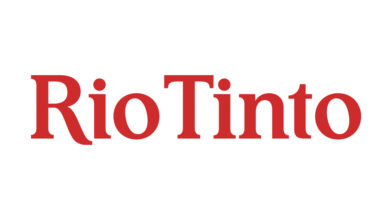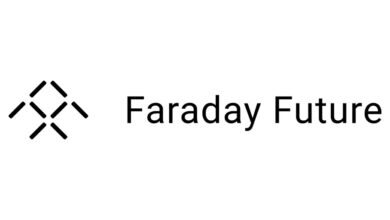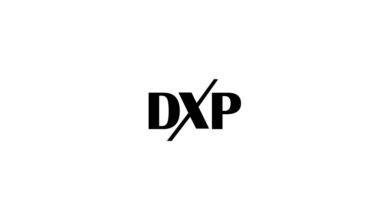The Worldwide Medical Waste Management Industry is Expected to Reach $13.1 Billion by 2028: Rise in The Amount of Healthcare Wastage Drives Growth – ResearchAndMarkets.com

DUBLIN–(BUSINESS WIRE)–The “Global Medical Waste Management Market Size, Share & Industry Trends Analysis Report By Type of Waste (Non-hazardous and Hazardous), By Service, By Treatment & Disposal Type, By Treatment Site, By Waste Generator, By Regional Outlook and Forecast, 2022 – 2028” report has been added to ResearchAndMarkets.com’s offering.
The Global Medical Waste Management Market size is expected to reach $13.1 billion by 2028, rising at a market growth of 5.5% CAGR during the forecast period.
Anything waste that includes infectious materials is referred to as medical waste, sometimes referred to as hospital waste. Along with trash from the manufacturing of biomedical waste with medical or laboratory origin (such as packaging, old bandages, infusion kits, etc.), it might also include waste from research labs that contains biomolecules or organisms that are generally prohibited from being released into the environment.
Whether or not contaminated by blood and its propensity to cause harm when not carefully regulated and dispersed, the disposed sharps are considered medical waste. Biowaste is one category of waste. Medical waste can be either liquid or solid.
The handling of biomedical waste using a variety of services, including autoclaving, chemical treatment, and burning, is referred to as medical waste management. The by product of hospitals, the research sector, laboratories, and surgery centres is medical waste.
This market’s expansion is a result of rising medical waste volumes, strict regulations enacted to handle them effectively and sustainably, and the expansion of healthcare infrastructure. Additionally, the market is growing as a result of an increase in awareness campaigns for managing medical waste.
The increasing application of stringent environmental and safety requirements by governments throughout the world is one of the key reasons driving the medical waste management industry. Various federal, state, and local regulations that have established a number of guidelines for the many categories of medical wastes govern this field.
The containment, transportation, labelling, storage, and processing of medical waste are generally governed by local and state rules. Any medicine that satisfies the requirements for becoming a hazardous waste must be properly disposed of in the United States in accordance with the Resource Conservation and Recovery Act of the U.S. Environmental Protection Agency.
Market Growth Factors
Rise in The Amount of Healthcare Wastage
The market-driver for the healthcare business, medical waste management, has experienced tremendous expansion. The demand for medical waste management has expanded due to a growth in hospitals, labs, research institutes, mortuaries, autopsy facilities, blood banks, and collection operations around the world. Hospitals, dentist offices, clinics, blood banks, medical research facilities, and laboratories all produce medical waste on a regular basis.
Stringent Regulations by Governments for Decomposition of Medical Waste
In affluent nations like the US and UK, there is a rise in activities of awareness programmes and conferences to raise understanding of proper medical waste management and prevent medical waste mistreatment. Government and non-government organizations are working by raising public awareness of the right method for getting rid of medical waste in a non-hazardous state. Thus, this growing awareness programs among healthcare institutions and the stringent government regulation is expected to accelerate the growth of the market during the forecast period.
Market Restraining Factors
Requirement of High Investment by Healthcare Companies
Hospitals, healthcare facilities, and pharmaceutical firms must make a sizable capital investment in the gathering and proper processing of waste in order to minimize environmental pollution. The disposal of both hazardous and non-hazardous medical waste calls for sophisticated technology and a large financial commitment. An incinerator facility must be installed, which is an expensive operation. Especially, the expenses associated with building the infrastructure and running the incineration facilities are extremely substantial.
Scope of the Study
Market Segments Covered in the Report:
By Type of Waste
- Non-hazardous
- Hazardous
- Infectious & Pathological
- Sharp Waste
- Pharmaceutical Waste
- Others
By Service
- Collection, Transport & Storage
- Treatment & Disposal
- Incineration
- Autoclaving
- Chemical Treatment & Others
- Recycling
By Treatment Site
- Offsite
- Onsite
By Waste Generator
- Diagnostic Laboratories
- Others
By Geography
- North America
- US
- Canada
- Mexico
- Rest of North America
- Europe
- Germany
- UK
- France
- Russia
- Spain
- Italy
- Rest of Europe
- Asia Pacific
- China
- Japan
- India
- South Korea
- Singapore
- Malaysia
- Rest of Asia Pacific
- LAMEA
- Brazil
- Argentina
- UAE
- Saudi Arabia
- South Africa
- Nigeria
- Rest of LAMEA
Key Market Players
List of Companies Profiled in the Report:
- Veolia Environnement S.A.
- Waste Management, Inc.
- Clean Harbors, Inc.
- Remondis SE & Co. KG (Rethmann Se & Co. Kg)
- Biomedical Waste Solutions, LLC
- Daniels Sharpsmart, Inc. (Daniel Health)
- Sharps Compliance, Inc.
- Republic Services, Inc. (Cascade Investment Group, Inc.)
- EcoMed Services (Tristel Plc)
- Stericycle, Inc.
For more information about this report visit https://www.researchandmarkets.com/r/ybwkoj
Contacts
ResearchAndMarkets.com
Laura Wood, Senior Press Manager
[email protected]
For E.S.T Office Hours Call 1-917-300-0470
For U.S./ CAN Toll Free Call 1-800-526-8630
For GMT Office Hours Call +353-1-416-8900




